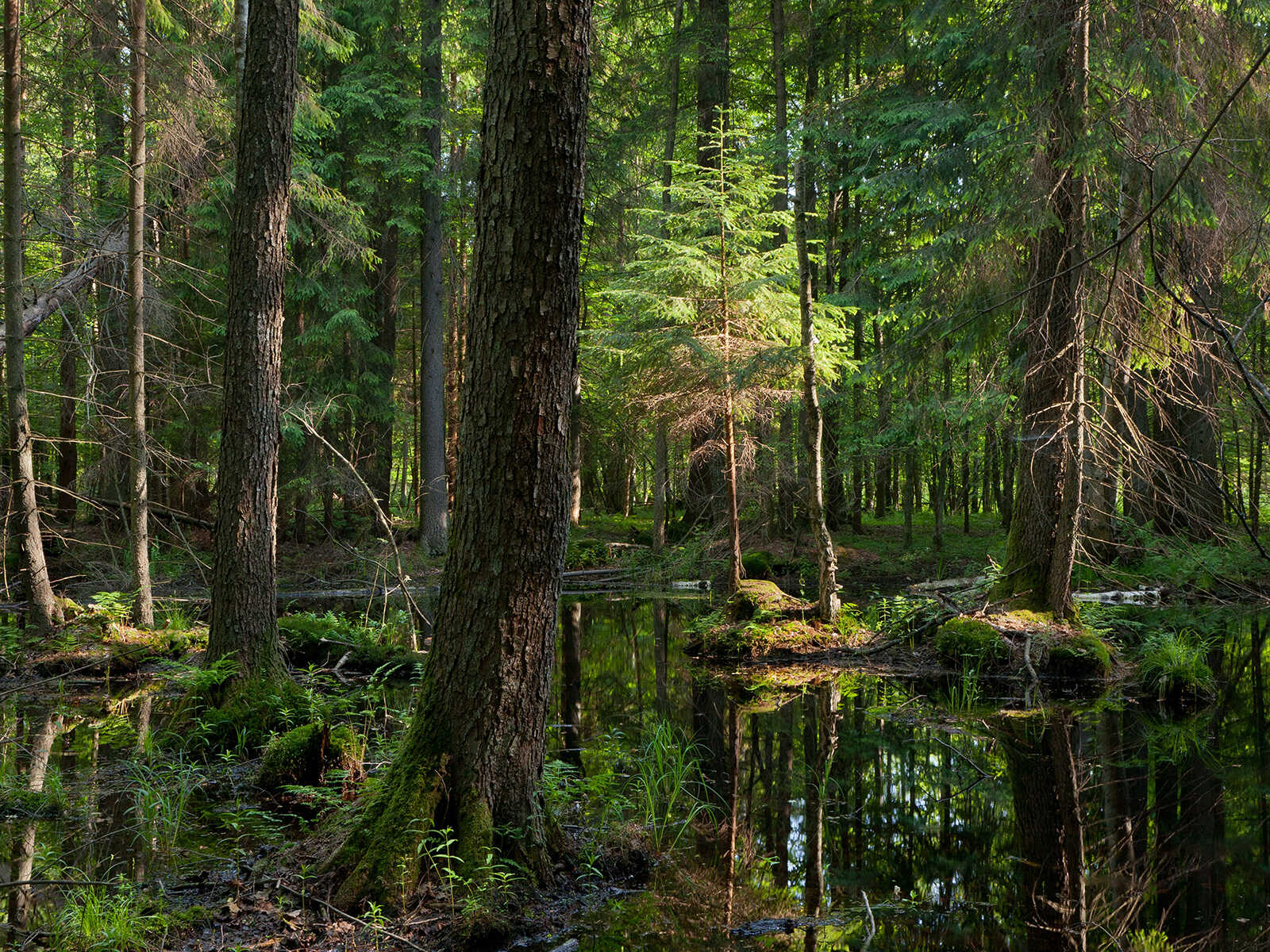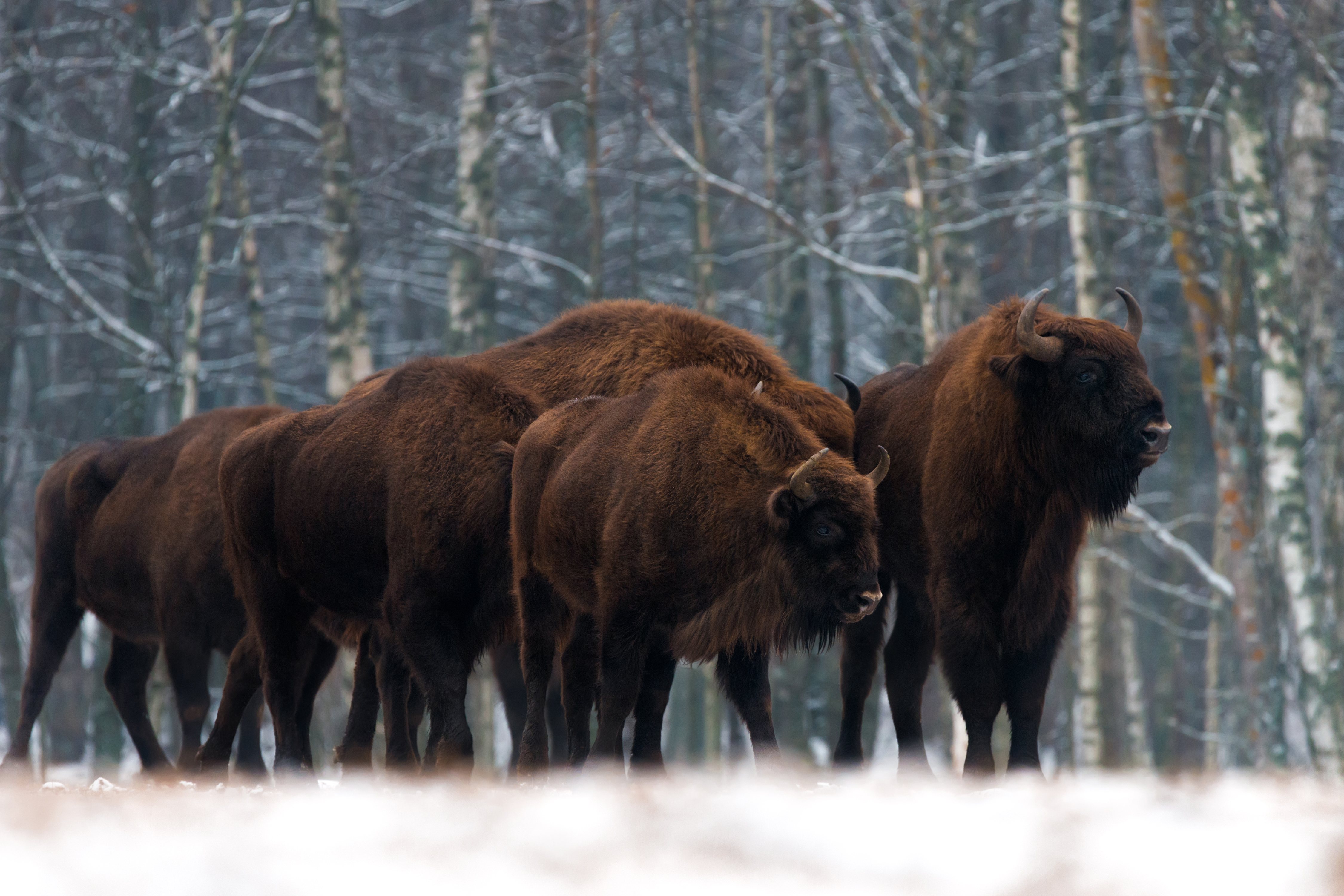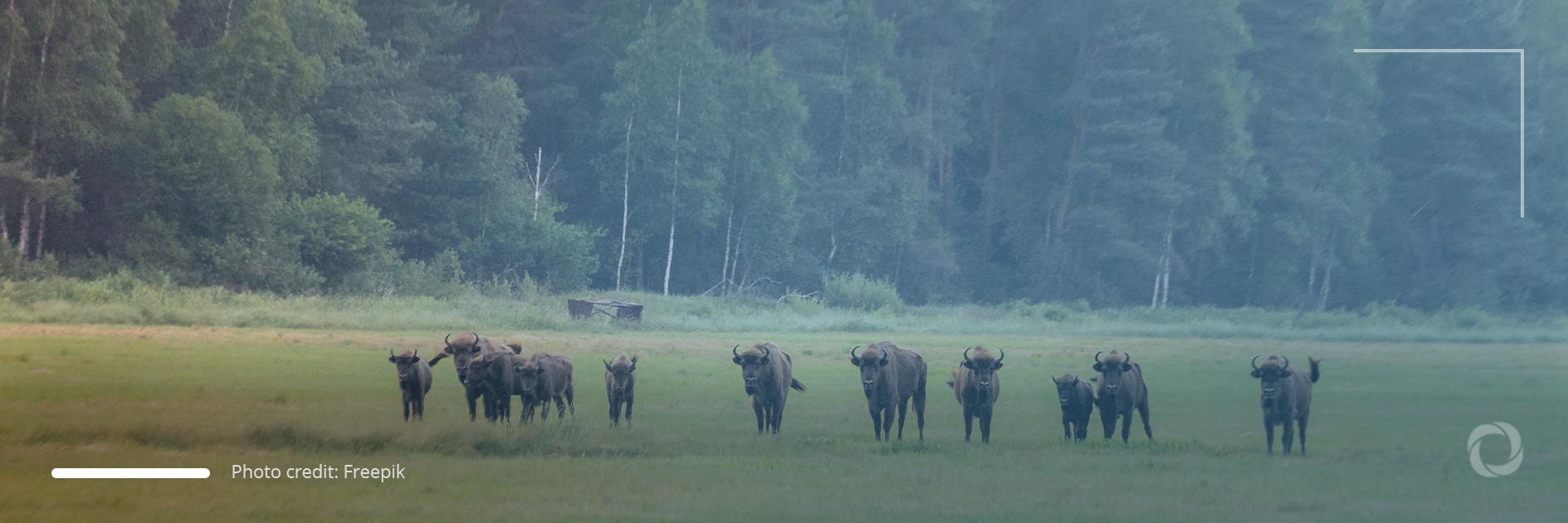The Polish authorities are planning to build a border wall which will pass through Białowieża Forest in Eastern Poland to stop irregular migration from Belarus. The forest, which sprawls across both Poland and Belarus and is a unique ancient backwood in Europe, will be divided into two. According to scientists, this will affect its biodiversity and may even deprive it of its status as a UNESCO World Heritage Site.
The construction of the wall is due to begin in 2021 and will be completed by mid-2022, according to the Polish Ministry of Internal Affairs. The wall will be 5.5 meters high and be comprised of 5 meters of steel poles and 0.5 meters of razor wire. Scientists fear that the construction of the wall may result in the loss and decline of species and that the wall will divide the range of species.
Why is Białowieża Forest exceptional?
Białowieża Forest occupies an area of approximately 150,000 hectares on both sides of the border and is the habitat of thousands of rare, threatened, and protected species including plants, fungi, and mammals such as the European lynx, moose, bison, deer, and wolf.
“It is a unique forest refuge in Europe and the largest remnant of old-growth forest still standing and that once covered most of lowland Europe,” Katarzyna Nowak, Adjunct Assistant Professor from Białowieża Geobotanical Station of the University of Warsaw, told DevelopmentAid.
Although the forest does not have any endemic species since it is not isolated from other areas by any natural barrier such as mountains or oceans, there are still factors that make it exceptional. It is host to many species that are the relics of primeval forests – species that used to be widely distributed in European forests in the past but nowadays are limited to a few fragments of forest ecosystems which have the highest level of naturalness.

“Białowieża Forest has always been a forest. It has never been converted into farmland or any other area cultivated by people. It has had scientifically-proven continuity as a forest for almost 12,000 years, and until World War I the forest was not a subject of any commercial logging activity. There is no other such forest in continental Europe in the temperate climate zone,” stated Bogdan Jaroszewicz, Professor of Biology at University of Warsaw and Director of the Białowieża Geobotanical Station, in a conversation with DevelopmentAid.
The uniqueness of the Białowieża Forest also stems from the fact that megafauna can still be encountered there and a relatively complete complement of vertebrates such as bison, moose, red deer, roe deer, wild boar, and large predators such as lynx, wolf, and bears, the latter of which have been crossing from Belarus into Poland for a couple of years but will no longer do so once the wall has been built.
As Professor Jaroszewicz adds, by 2001 scientists had recorded about 11,500 animal species in total in the forest whereas today he estimates that there would be well over 12,000 as new species are being found all the time. However, Professor Jaroszewicz estimates that this number represents a mere fraction of what could be found there.
“In the case of native vascular plants, it would be more than 1,100 species, and we have discovered over 2,000 species of macrofungi and over 1,500 of microfungi. These 2,000 species are about a quarter of what we can see in the whole of Europe,” he says.
Katarzyna Nowak warns that the forest is inhabited by globally threatened species including birds such as the Greater Spotted Eagle as well as also supporting many deadwood-dependent species, for example, rare beetles and woodpeckers.
Why might the border fence put the forest at risk?
Although the Polish authorities argue that the construction of the wall will be safe for the wildlife in Białowieża Forest as it will replace the razor wire that can entangle animals, scientists point out that there are other risks that such a wall brings.
“The wall will stop the animals’ migration across borders, especially if no passages are going to be constructed because even smaller animals won’t be able to cross, so the populations of wolves, lynx, badgers, foxes, and many other species will be split. That will lead to diminishing genetic diversity of those populations which subsequently may cause their decline as animals having low genetic diversity are more prone to diseases or mutations,” said Professor Jaroszewicz.
Katarzyna Nowak adds that there is already a precedence of similar walling turning out to be harmful for wildlife.
“The wall on the US-Mexican border meant that local species lost half of their range and were cut off from conspecifics and resources. In Białowieża it would be similar,” she insists.

The scientists indicate that the construction of special passages for animals similar to that which is done in highway underpasses and overpasses may be a partial solution here but first, the constructors must learn about the routes that animals are most likely to take.
Although animals will be much more affected by the wall, Professor Jaroszewicz argues that such a construction will also affect plants.
“The barrier will block seeds’ transmission at least of some species as some are dispersed or spread by animals,” he says.
Last but not least, the Białowieża Forest is a World UNESCO Heritage Site and this status may also be at risk.
“Any barrier is harmful to the forest; the bigger the forest, the higher its ecological stability. We cannot forget that Białowieża Forest was put on the UNESCO list as a transborder entity which means that it should have one integrated management plan, established by two countries and that the forest is a whole. If we cut it with a fence or a wall there is a risk that the forest will be listed as endangered by UNESCO but it cannot be excluded that UNESCO will remove the forest from the list altogether as has happened in the case of Dresden, for building the modern bridge across the protected cultural landscape,” Jaroszewicz warns.

